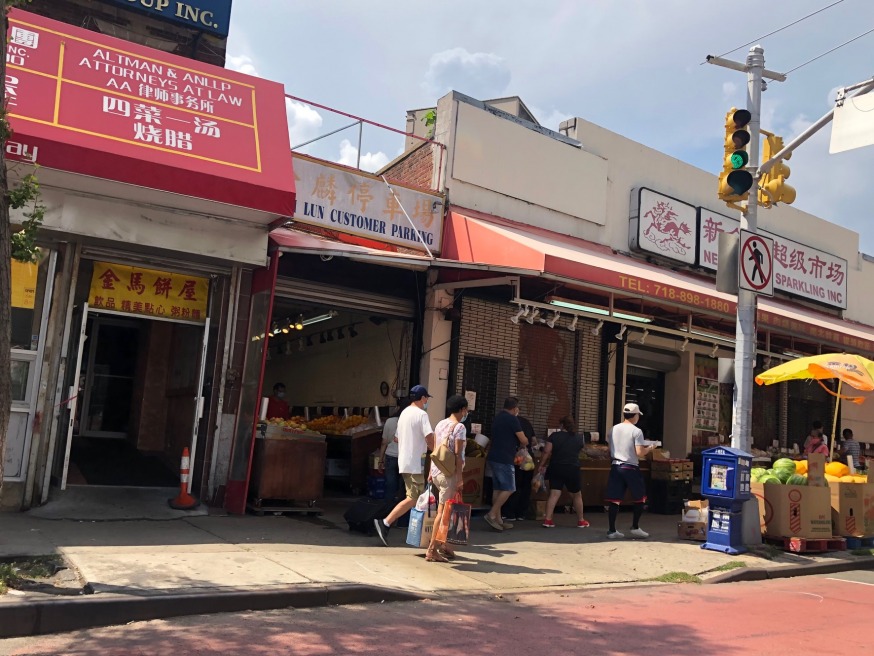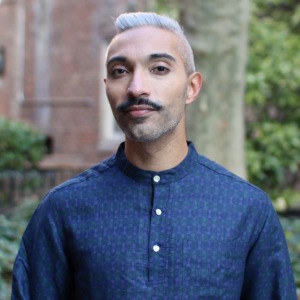
The Elmhurst Chinatown on Broadway (Photo: Queens Post)
Feb. 22, 2021 By Amit Singh Bagga
From refusal of service to racist rants to vicious, violent attacks on the subway, including the harrowing recent incident against Noel Quintana, a Filipino man whose face was slashed from end to end with a boxcutter, we’ve seen a terrifying rise in anti-Asian hatred in New York City.
Worse yet, far too many City leaders are denying that there’s a problem. But while this type of bias and hatred has deep roots in our nation, there’s also an additional culprit this time, one that’s gone from threatening our democratic structures to now endangering our very lives: online misinformation and disinformation.
While cracking down on this truly global and national threat is going to require unprecedented actions by national governments and social media companies, with the lives of New Yorkers at stake, the City cannot simply wait for others to step up. We must use all the tools that are available to us to stop the proliferation of hatred, bias, and violence at their root.
Our communities in particular are no strangers to the spread of hateful falsehoods. Even before social media—following 9/11 for example—Arab, Muslim, and also South Asian families (like mine) suffered grotesque verbal and physical assaults, with my own turbaned Sikh father being constantly profiled. Sikhs were murdered across the country, from gas stations in Arizona to temples in Wisconsin.
It’s hard to describe how constant and destabilizing this fear becomes to those who haven’t felt it or how painful it is to have its existence denied—especially by those in government we trust to keep us safe.
Through the 2016 election, Brexit, and most recently in the deadly Jan. 6 insurrection at the U.S. Capitol, most of us have come to understand that online disinformation can have society-shaking results, and we are now seeing how it can spark direct violence in our streets and subways because of rapid, unchecked amplification.
But the recent spate of anti-Asian attacks have given this issue new urgency.
The City’s own Commission on Human Rights received nearly 400 complaints of “coronavirus-related” incidents just between February and May of 2020, with 37 percent being directed towards Asian-Americans—a tenfold increase compared to the same period the year prior.
Given that such incidents are always grossly underreported and that the pandemic has continued to rage, we know the real number is in the thousands. Our City must act against the spread of racist disinformation directly where it is and in places the City has likely never been before.
First and foremost, this means combatting these falsehoods where they operate. The City must invest in meaningful and dedicated resources to combat misinformation and disinformation (and yes, millions of dollars will be required). These efforts will require leveraging technology, communications, and local organizing in order to impact the way that false information travels and proactively communicate the truth to reach every segment of our population.

Amit Singh Bagga Photo: Amit For Council
We can only fight falsehoods with the truth, and we cannot let vacuums of information be colonized by dangerous, hateful, and false rhetoric.
This means that the messaging and content must not only be clear, but “attractive” and shareable, like the very disinformation it seeks to replace.
This is not only about being convincing and correct, but also about bending the very online dynamics that enable the spread of these dangerous falsehoods toward justice, truth, and safety.
Next, in addition to major investments in truth-telling, meaningful expansion of the City Commission on Human Rights (CCHR) would send a clear signal to all New Yorkers that the City is taking this threat seriously. Though it has had bold leadership, the agency has been chronically underfunded and has been under-equipped to tackle systematic, disinformation-fueled bias and hatred faced by our community or any other.
CCHR is budgeted for just $14 million in the current Fiscal Year – that’s less than one-tenth of one percent of the City’s budget. Even taking into account our multi-billion-dollar deficit, CCHR is clearly a top target for where we should be investing our resources while we are divesting from all that’s broken about the NYPD.
Further, working with our State colleagues, we must explore giving CCHR direct authority to bring its own cases in State court, truly allowing it to hold individuals responsible for threatening our lives accountable.
Finally, City government needs to directly empower communities to fight the fear and disinformation that’s led to bias and violence.
Frankly, many New Yorkers aren’t going to trust information unless it’s being communicated by someone who they feel they can trust – and far too often, that “someone” isn’t government.
We faced very similar headwinds in our fight for a complete and accurate census count in New York City, which is precisely why we invested, for the first time in the City’s history, millions of public dollars directly into more than 160 organizations serving Black, Brown, and immigrant communities in more than 80 languages, specifically for the purpose of linguistically and culturally competent organizing.
This approach, combined with millions invested in every type of media available in our city, resulted in nearly every majority-Black neighborhood in New York City outperforming its 2010 participation rate, major increases in response in immigrant communities across the city over the census period, and the city overall achieving a self-response rate higher than that of most major cities in the U.S. Yes, this was hard and expensive to do, but it needed to be done.
Bias and hatred against Asian-Americans has a long and shameful history in our nation, as does the diminishing of its severity by our government. Particularly in the vacuum of action by others, City government has to treat anti-Asian hatred as the urgent civil and human rights issue that it is, and put our fight against it in the same frame as our fight against anti-Semitism, Islamophobia, and anti-Black racism.
This obligation extends to us as Asian-Americans as well, and the terrifying rise in hatred against us over the last year serves as an important reminder of the critical fight against anti-Blackness we must continue to wage within our own communities, for the liberation of one oppressed people is intrinsically tied to the liberation of all oppressed peoples.
We need to fight this old-but-evolving 21st-century problem with an evolved 21st century approach. Keeping us safe against this threat will be difficult and expensive, but if we truly care about the lives of all New Yorkers, we have to recognize that our City budget is a moral document and put our money where our mouth is.
As we prepare for the next budget cycle, City government needs to stand up and fight back. It needs to take up these proposals and put forward a meaningful plan (with real dollars attached) about how we can fight misinformation and disinformation in order to keep the fabric of our communities strong and protect our lives — including the lives of all Asian-American New Yorkers.
Amit Singh Bagga is a candidate for City Council District 26.
